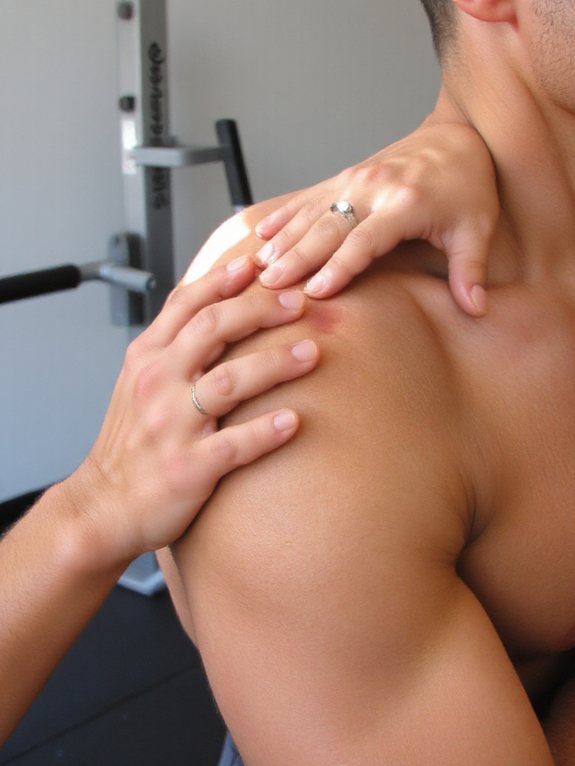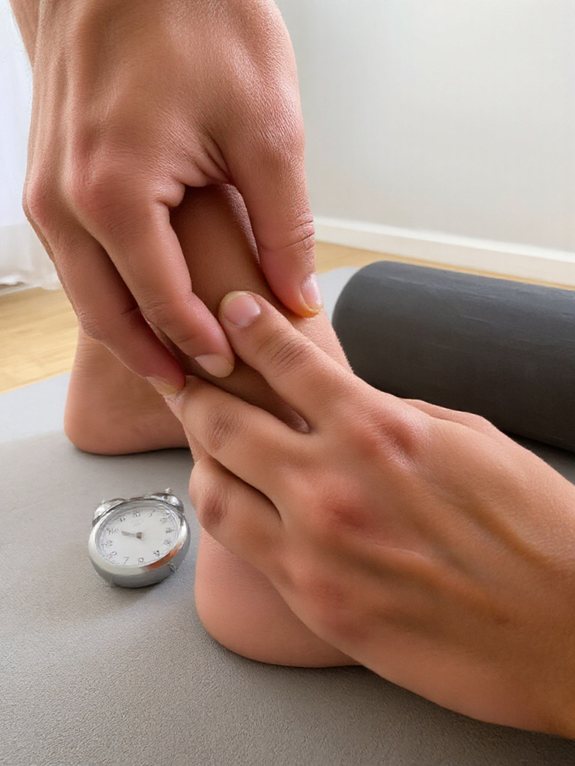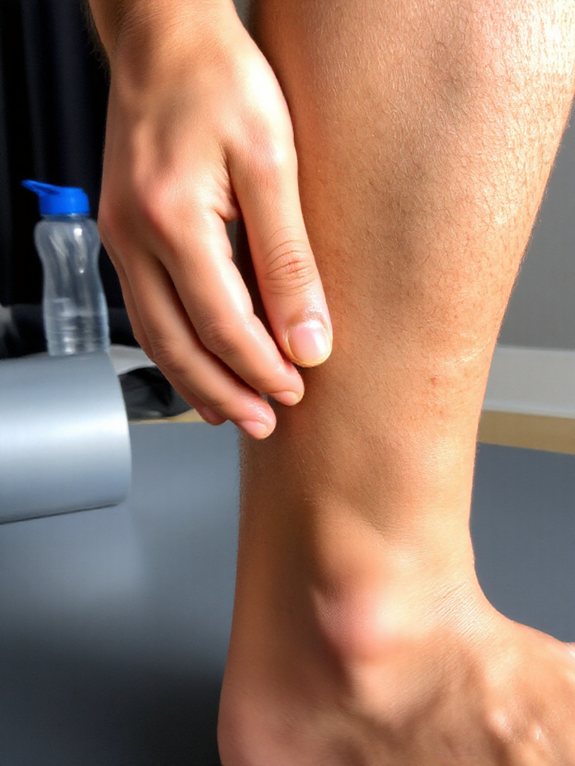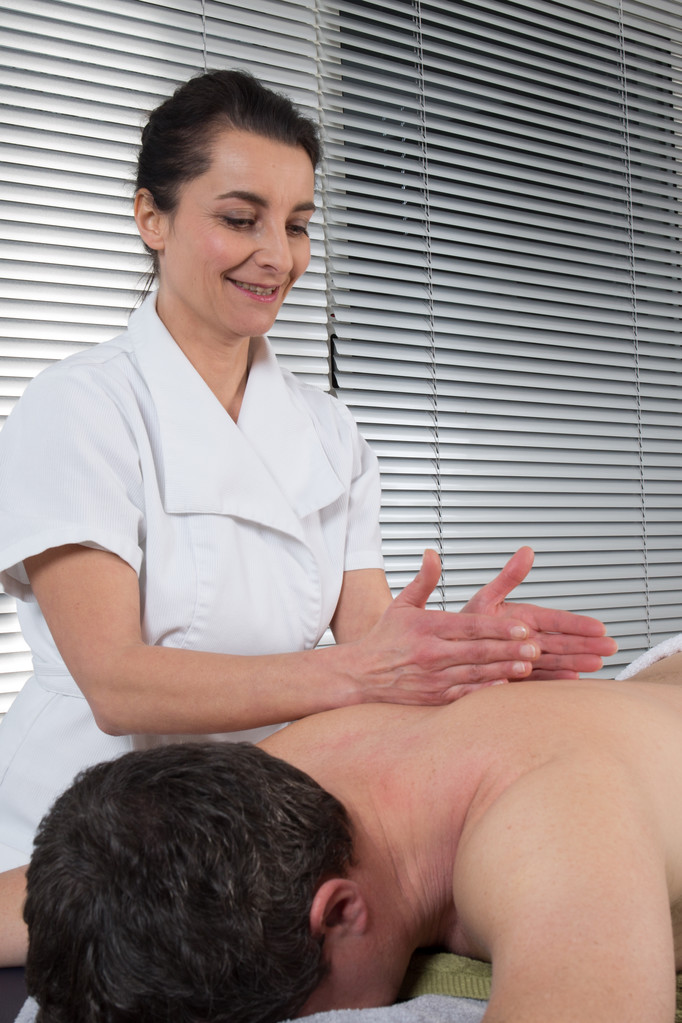So, you’ve found one of those pain-in-the-butt (sometimes literally) muscle knots—here’s what you do! Feel around for spots in your sore muscles that hurt or twitch when you poke ’em; that’s your “trigger point.” Use your thumb, finger, or a tennis ball to press in and hold for 30 to 90 seconds—enough pressure to “hurt so good,” but not make you weep. Repeat a few times, rest a bit, and yes, there’s more you can do to keep those knots in check!
Key Takeaways
- Locate trigger points by feeling for tender, tight muscle knots that may cause referred pain when pressed.
- Apply steady, gradually increasing pressure with your fingers, thumbs, or a massage tool for 30–90 seconds per spot.
- Use circular or back-and-forth motions to enhance blood flow and help release muscle tension around the trigger point.
- Repeat massage on each trigger point 3–6 times, allowing rest between rounds to prevent irritation or excessive soreness.
- Incorporate regular hydration, stretching, and foam rolling to support recovery and prevent future trigger points.
Identifying and Locating Trigger Points After Injury

Whenever you injure a muscle—maybe you twisted your back picking up groceries (been there, done that)—it’s surprisingly easy for painful little knots called “trigger points” to sneak in and make things feel even worse.
These little troublemakers are actually hyperirritable spots in the muscle, and if you poke around, you’ll feel a tight, twitchy band (trigger point anatomy 101!).
Hyperirritable muscle spots hide as tight, twitchy bands—poke around and you’ll find these classic trigger points making mischief.
What’s wild is that pressing one spot can send pain zinging somewhere totally different, thanks to pain referral. For example, push on a trigger point in your shoulder and—bam!—your neck aches.
You’ll notice tenderness, tightness, maybe even a slight jump when you press. If you’re helping others, pay close attention to these cues; finding these spots is the initial step to real relief!
Effective Techniques for Massaging Trigger Points
Let’s talk technique—because trust me, just poking around at random won’t cut it regarding trigger points! When you’re helping someone recover, use manual techniques like pressing with your thumbs (don’t worry, you don’t need Hulk’s strength). Application tools, such as foam rollers or tennis balls, can save your hands and give you more control. Try circular strokes or gentle back-and-forth motions; these enhance blood flow and melt away muscle tension. If you want to sound fancy, mention micro-stripping—just a gentle, controlled glide across the knot. Myofascial release is another winner for stubborn spots.
Here’s a quick guide:
| Technique | Application Tool | Benefit |
|---|---|---|
| Manual Pressure | Thumbs/Fingers | Direct relief |
| Micro-stripping | Supported Thumb | Precise tension release |
| Foam Rolling | Foam Roller | Broad muscle coverage |
| Myofascial Release | Massage Ball | Deep muscle relaxation |
Guidelines on Pressure, Duration, and Frequency

Even though it’s tempting to just dig in and knead away at those stubborn knots, getting the pressure, duration, and frequency right is what actually makes trigger point massage work—trust me, I learned the hard way after turning my own back into a bruised banana!
When you’re helping someone, start with gentle pressure to find those tricky spots, then slowly ramp it up—think “firm handshake,” not “bone crusher.”
Aim for 30-90 seconds of steady pressure, using your thumbs or a tool, but never so much that it causes sharp pain.
Repeat this 3 to 6 times per spot, giving the muscle a little breather between rounds.
Understanding the Physiological Benefits of Trigger Point Massage
Nailing the right technique is only half the battle—what really blew my mind about trigger point massage is how much it can change what’s going on *inside* your body.
When you press on those stubborn knots, you’re not just breaking up tension, you’re actually improving muscle physiology by enhancing blood flow. It’s like you’re unclogging traffic on a busy highway—more oxygen and nutrients get delivered, and waste gets carted off faster. That’s huge for muscle recovery!
Plus, by releasing pressure on nerves, you’re calming pain pathways, which means less pain and stiffness. I used to think massages were just for pampering, but honestly, helping others relax their muscles can genuinely improve their energy, mobility, and even their mood.
Releasing pressure on nerves soothes pain and stiffness, boosting energy, mobility, and even lifting your mood.
Who knew science could feel this good?
Recovery Strategies and Preventive Measures for Muscle Health

While it’s tempting to think a good massage is all you need for happy muscles, recovery actually takes a bit more planning—trust me, I learned that the hard way after hobbling around like a penguin post-leg day!
If you want to help others with muscle recovery and injury prevention, start by focusing on nutrition. Grab some protein and carbs within an hour post-workout—think a turkey sandwich or a smoothie—to rebuild muscles and replenish energy.
Hydrate like your life depends on it, because dehydration slows healing and ups your risk for cramps.
Warm up before and cool down after exercise; your muscles will thank you later!
And don’t skip active recovery—light movement, foam rolling, or yoga keeps you limber and reduces soreness.
Conclusion
So, if you’re like me and sometimes feel like your muscles are auditioning for a rock collection, don’t stress! With a bit of patience and the right pressure, you can zap those trigger points and get back to moving like a human, not a robot. Remember, listen to your body—too much pressure isn’t heroic, it’s just painful. Keep at it, be kind to yourself, and hey, your future flexible self will thank you!

